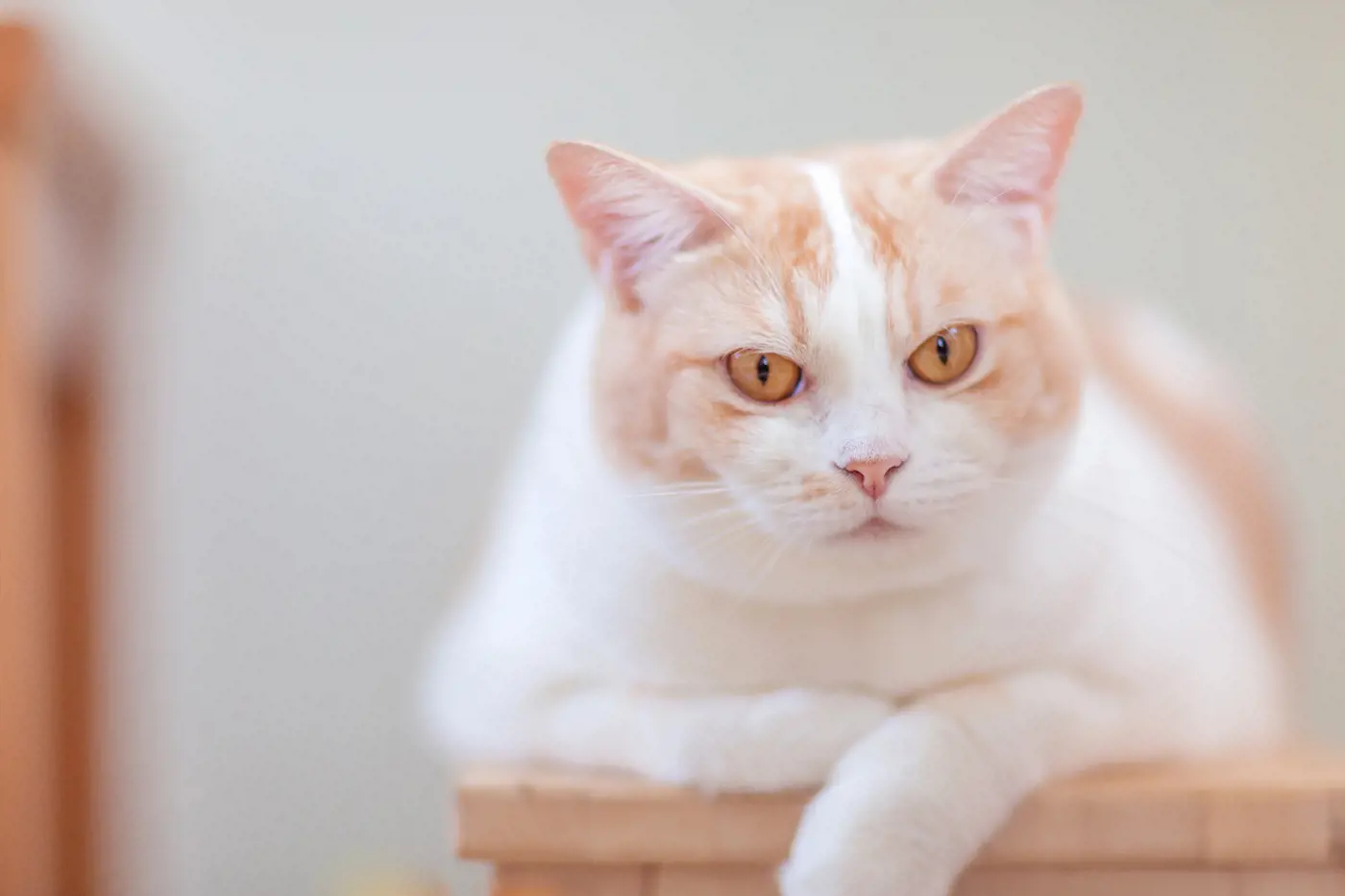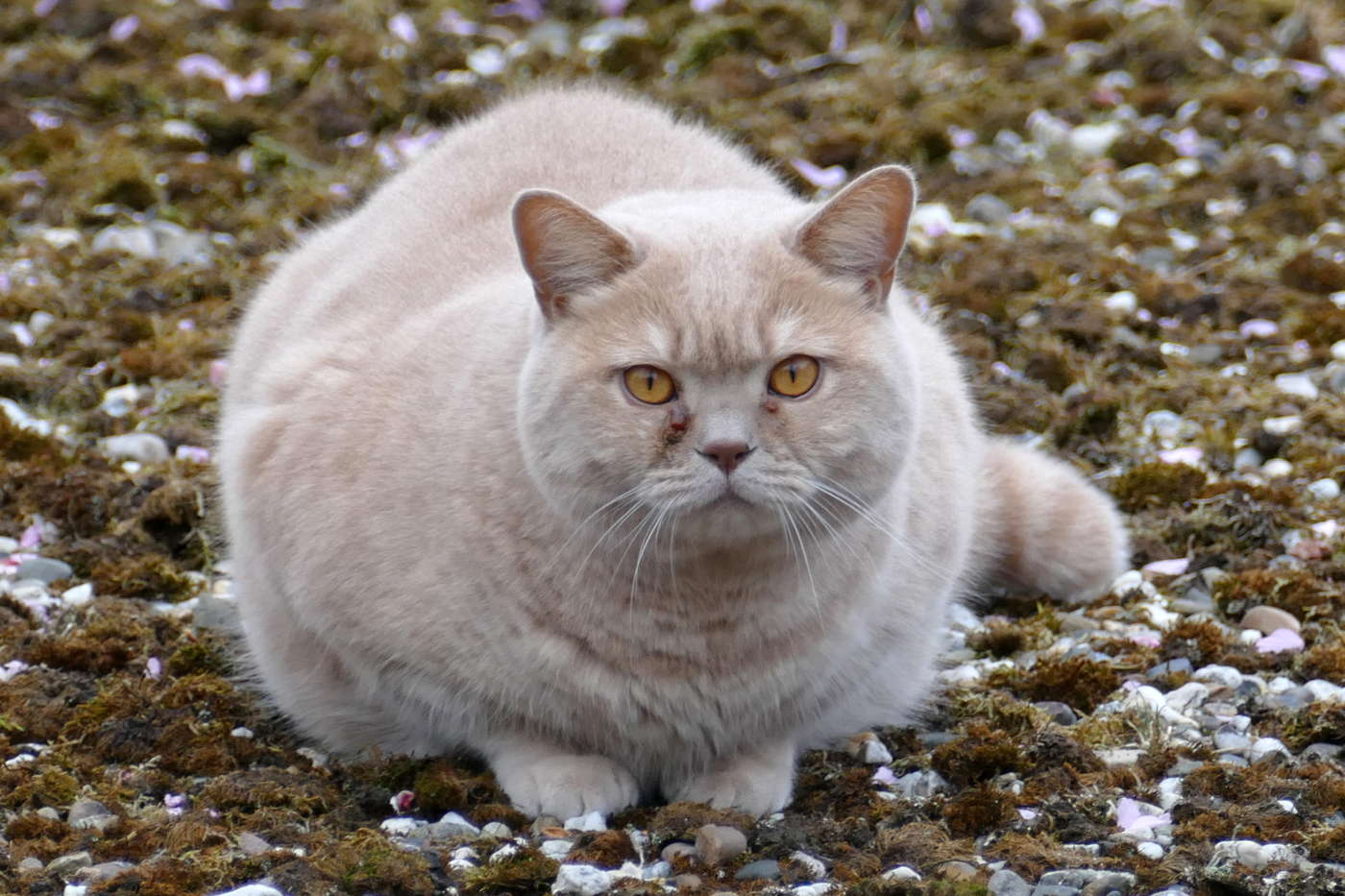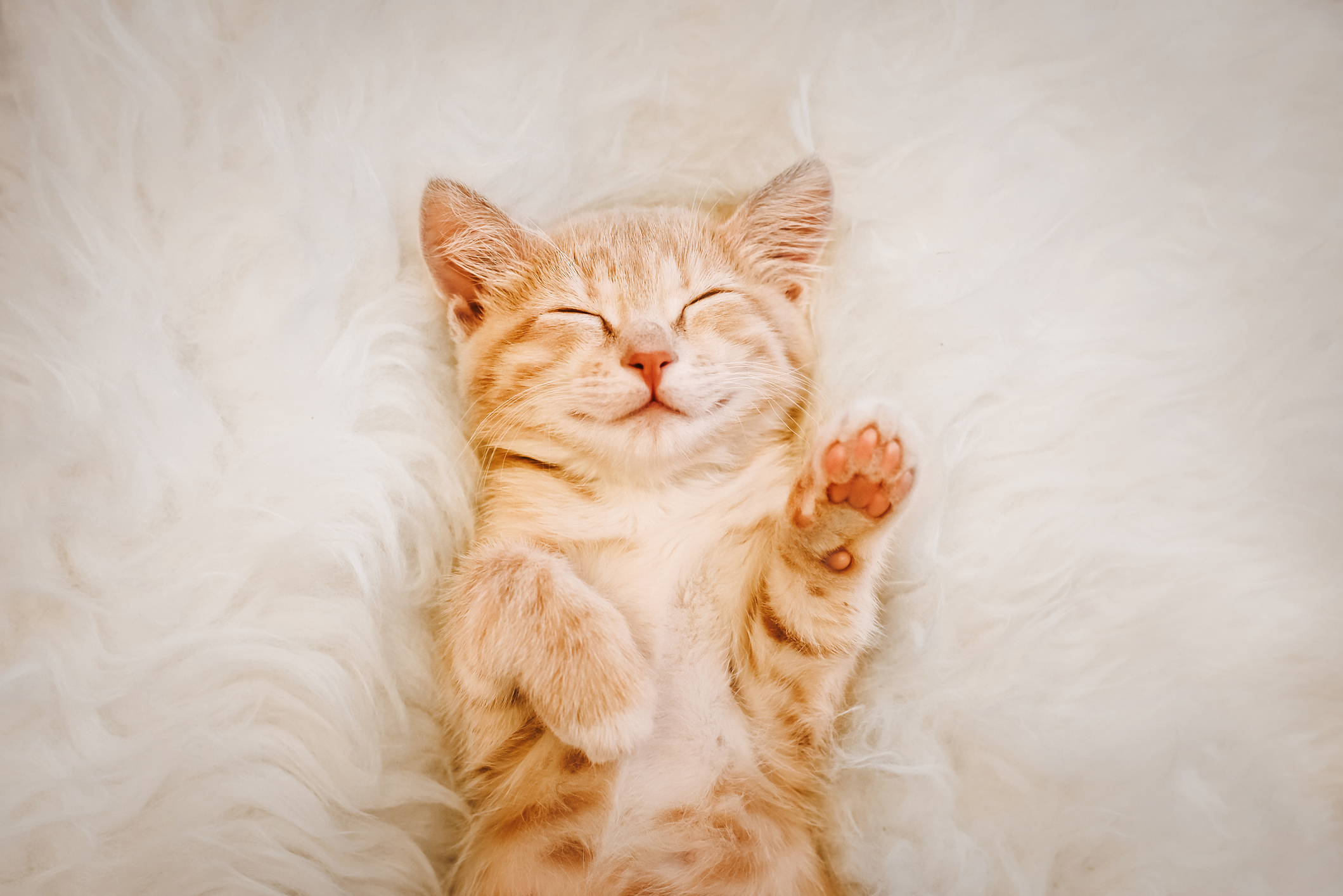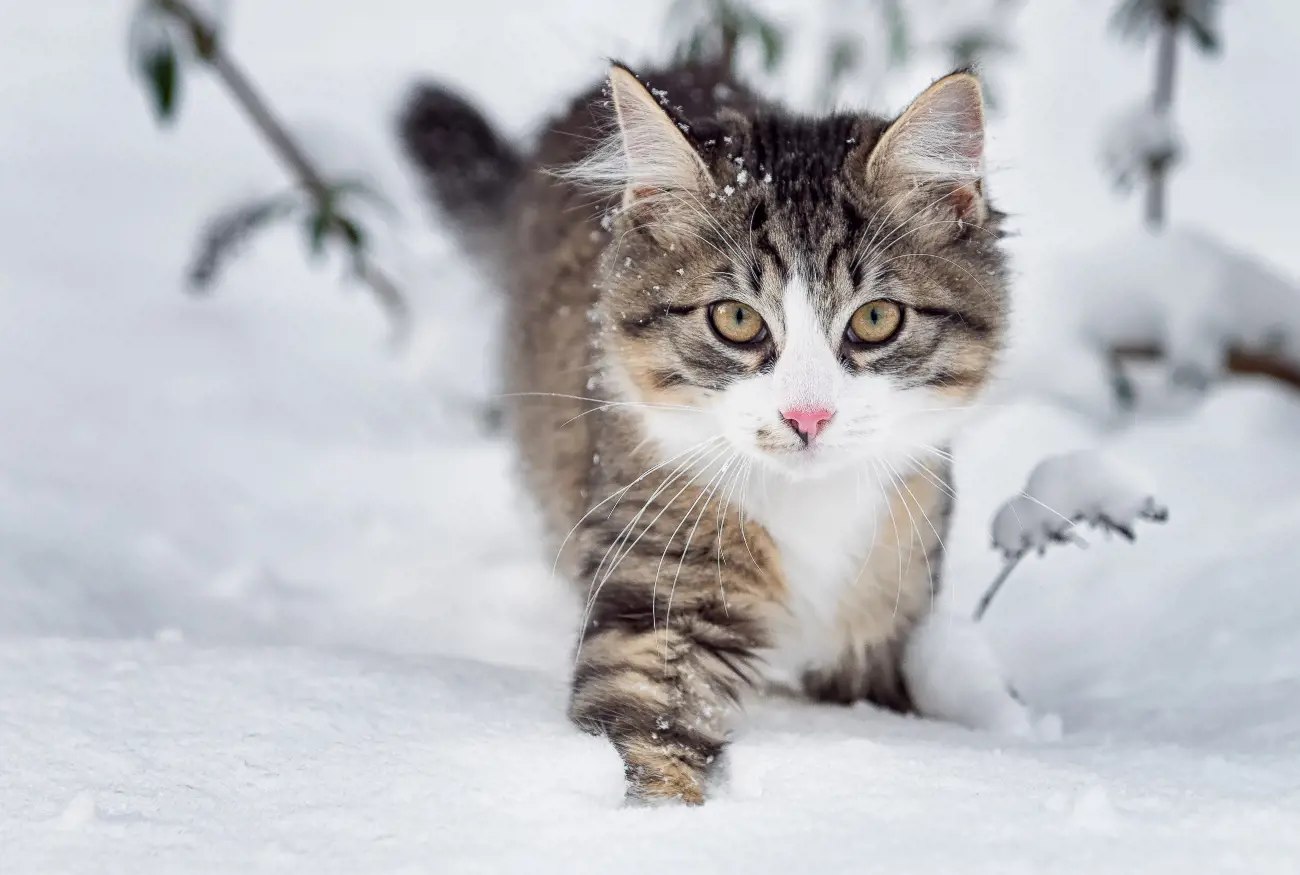How to help a cat give birth
25th May, 2021

Finding out your beloved pet is pregnant is a wonderful but also worrying time – particularly if it’s unexpected. Even the most experienced cat owner can feel nervous at the prospect of their cat going into labour. And worried about whether they’ll be able to deliver their precious kittens safely.
While cats often give birth without any help from us, it’s still important to know all you can about the process, in case they need a helping hand. Read our ‘How to’ guide to helping a cat give birth and you’ll be a proud pet grandparent in no time!
Whether you’ve got a pedigree puss or a marvellous moggy, one of the best things you can do to keep your pet protected is to invest in insurance for pets. Purely Pets' Lifetime Gold products have recently been awarded a 5* Defaqto rating for 2021. Give us a call to find out why we’re so popular!
How to tell if your cat is pregnant
If you have a female cat who hasn’t been spayed, a common question you might have is ‘How do I know if my cat is pregnant?’
While you might not know at first, after a few weeks there are several tell-tale signs you can look for.
-
Red/pink, enlarged nipples – usually becomes noticeable in the first two to three weeks.
-
Increased appetite – particularly in the third trimester of pregnancy.
-
Rounded and swollen belly.
-
Nesting behaviour – usually around two to three weeks before she gives birth.
-
An end to mating calls.
-
Vomiting or lethargy – relatively uncommon but sometimes experienced.
If you suspect she is pregnant, then it’s important to take her to your vet for a check-up to confirm. The vet will be able to check for any complications and can give you advice on what to expect.

At home preparations
Just like any element of pet care, the more prepared you are the more able you’ll be to deal with any problems that arise. In the lead up to the big day you’ll need to consider doing the following.
Keep a track of her due date
Hopefully your vet will have given you a good idea of her due date. Cat gestation is usually around 65 days but it’ll make it easier to spot complications if you keep a track as the days pass.
Feeding, worming, vaccinations and flea treatment
By the time a pregnant cat reaches her third trimester (around 42 days into the pregnancy), she will have very different nutritional needs than previously.
To ensure she's getting the proper amount of food and nutrients it might be worth switching her from adult cat food to kitten food.
Kitten food is higher in calories for a smaller volume of food. This makes it ideal for keeping her well-fed when her womb is pressing against her stomach. It also provides her with extra nutrients to benefit her growing kittens.
Always make sure your female cat is up to date with her vaccinations as she will pass on immunity to her kittens through her milk.
In addition, kittens can easily contract worms and fleas from their mother, so it’s also important to keep up with these treatments.
Prepare a birthing box/nest
Your cat will want a warm, calm and safe place to give birth and as the due date approaches will probably start searching one out.
Give her a helping hand by preparing a birthing box well in advance of her due date. There are disposable, self-assembly boxes on the market. Or you can make one yourself using a large cardboard box. The most important thing is it needs to be:
-
Comfortable, warm and in a quiet room that’s kept at around 22°C.
-
Large enough for your cat to comfortably stand, stretch and turn around in. Take into account there’ll also need to be room for the kittens.
-
Lined with a soft, absorbent bedding material. Old but clean towels, bedding, fluffy blankets and newspapers are all useful.
-
Covered with a blanket if it has no top. To keep in warmth and ensure privacy.
-
High-sided to keep those inquisitive kittens inside!
-
Near to food, freshwater and her litter box – but not too close.
Get supplies
You should also have other items ready in case of emergency. A checklist could include:
-
Cat carrier in case you need to make an emergency visit to the vet.
-
Absorbent pads to line the delivery area.
-
Clean towels to help clean the area and kittens, if necessary.
-
Heating pad for the bottom of the box. This can help prevent kittens from getting chilled. Never place kittens directly on a heating pad as it can burn them.
-
An infra-red lamp to keep newborn kittens warm.
-
Rubbish bin/laundry basket. Birthing can get messy and you’ll need somewhere to put any discarded towels after the birth.
-
Dental floss and clean scissors. If the mother cat doesn’t chew away the umbilical cord, you will need to tie it off with dental floss and cut the cord.
-
Cat milk powder. If there’s a problem nursing the kittens then you might need to step in. Cow or goat milk is not a substitute. Have a kitten feeding bottle or syringe on hand to feed them.
Enter vet’s details into your phone
Have your vet’s number handy in case you need help or advice. Pet insurance policyholders also have access to the Purely Pets 24-Hour Vet Helpline. Our veterinary professionals are on hand to answer any cat-related queries.
A guide to the three stages of birthing
It’s important to keep your cat calm and give them plenty of space when they’re giving birth. Most cats will give birth without any help, but it’s good for you to be nearby just in case. Avoid fussing over her.
Checking in every 15 minutes is perfectly fine. If you stress her out, she might interrupt her labour and delay delivery for hours, or even days!
Birthing can be divided into three distinct stages. With the second and third stages repeated for each kitten. From the beginning of the second stage, birthing is usually completed within 6 and 12 hours, with each kitten taking between 10 and 60 minutes.

Stage 1: Preparation for birth
During this stage your cat’s birth canal will relax and widen, while her kittens get into the correct position.
According to Cats Protection this stage can last up to 36 hours. During this time, you’ll notice changes to your cat’s behaviour including:
-
Becoming restless and more vocal.
-
Making repeated visits to the birthing box and hiding away.
-
Grooming excessively (especially around her back end).
-
Pacing and panting.
-
Eating less.
-
Passing a small amount of red/brown mucus from her vulva. If she is discharging blood, then call your vet immediately – something could be wrong.
Just before your cat starts having her kittens, she is likely to start settling down. Don’t be disappointed if she doesn’t choose your carefully prepared birthing box!
Stage 2: Giving birth
Once your cat enters the second stage and starts to give birth, stronger contractions and active straining will begin.
The first sign you’ll notice is the amniotic sac appearing briefly at the vulva before bursting. Kittens usually come out head first (although sometimes tail first), after which it should only take one or two further pushes from the cat for the kitten to be born.
The first kitten is normally born within 30 minutes of straining starting. Subsequent kittens should come every 10-60 minutes after that.
Each kitten is born inside a thin amniotic sac, which your cat should break open and tear off. The mother should then chew through the umbilical cord and lick the kitten. All this cleans the kitten and stimulates them to breath.
Sometimes the kitten will seek out the mother cat’s nipples straight away and start feeding. Other times it may take a few minutes or the mother won’t allow them to feed until all kittens are born.
Stage 3: Passing the placenta
For each kitten born, your cat will also pass a dark fleshy mass called the placenta (afterbirth). Each placenta will emerge usually around 15 minutes after each kitten.
While they don’t always come in perfect order one after another it’s important to keep a count of how many placentas are passed.
Inform your vet if you think one has been left behind inside your cat. This can pose an infection risk if it’s not removed. Be aware mother cats usually eat the placenta.
Care following birthing
Birthing is a very tiring process for a mother cat so she is likely to be very hungry, tired and in need of a good rest. So, make sure the area is kept calm and quiet and they aren’t disturbed.
Bonding with her kittens is a vitally important part of the process. If she feels anxious or uncomfortable then she might even reject them.
It’s perfectly normal for a mother cat to have a vaginal discharge for a few weeks after birthing. But it should not smell.

Problems to look out for during birthing
In the majority of cases birthing happens without any issues. Contact your vet if you notice any of the following problems:
-
Excessive bleeding – Although it's perfectly normal to see some blood during birthing and after, excessive bleeding is abnormal and requires immediate attention from your vet. If you notice a greenish discharge but no kitten then it could mean there’s a kitten in distress that needs help.
-
Exhaustion – If birthing continues for a long time, then your cat can become exhausted and stop pushing, putting her and her kittens at risk. Contact your vet urgently if your cat has been straining for 20-30 minutes without producing a kitten.
-
Kitten stuck – Large kittens or those in a difficult position can become stuck inside the birthing canal. Call your vet for advice immediately. If the kitten gets stuck halfway out then a gentle pull might help – call the vet if this doesn’t work.
-
Mother not removing amniotic sac – If the mother cat doesn’t do this then tear a small hole in the sac and remove it yourself. If the sac stays around the kitten’s face for too long, they won’t be able to breathe.
-
Umbilical cord problems – Again, sometimes mothers might need help removing their kittens’ umbilical cords. This doesn’t need to happen straight away but if left attached for too long it can cause problems.
-
No kittens – If your cat hasn’t shown any signs of going into labour a few days after you expected her to. Similarly, call the vet if a kitten has arrived but no further kittens appear after an hour.
-
Stillborn kittens – It’s not unusual for one or two kittens to be stillborn. Before removing them, make sure they really are dead. A limp kitten might be revived by briskly rubbing them with a warm, damp face cloth. You can also try raising and lowering a kitten’s legs and blowing into their face and mouth.
Protect your precious pets with Purely Pets
Although Pet Insurance is unlikely to provide cover for pregnancy related issues, Pet insurance from Purely Pets can give your feline the cover they deserve at a price to suit you.
Vets’ fees for accidents, illness or both can be covered from between £1,000 and £15,000, depending on the level of cover you choose.
With 15 levels of lifetime cover on offer, you can pick a policy that suits your budget and requirements.
You can choose an excess starting from £60, call our 24-Hour Vet Helpline, use our online policy management portal at a time to suit you, and speak to our insurance team for advice.
Get a quick quote for pet insurance today.
Policy benefits, features and discounts offered may very between insurance schemes or cover selected and are subject to underwriting criteria. Information contained within this article is accurate at the time of publishing but may be subject to change.
Helpful Pages
Recent Posts

Why do Pugs lick the air?
02/10/24Pet Insurance Quote
- 98% claims paid *
- Claims paid directly to vets
- 24/7 vet video consultations
- Interest free monthly payments



